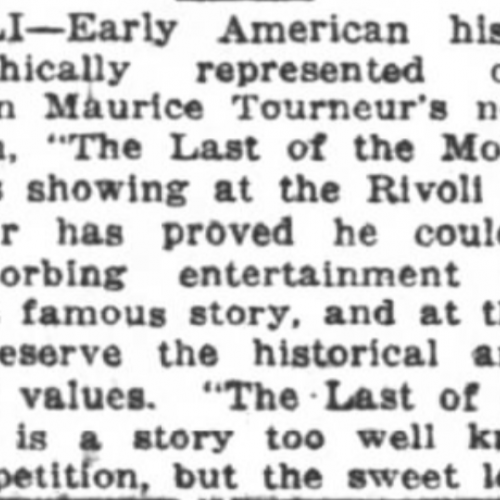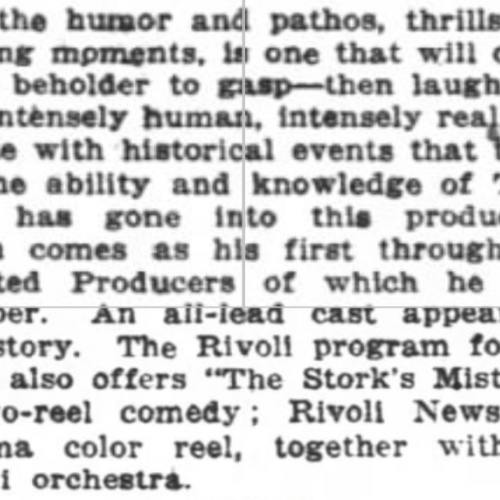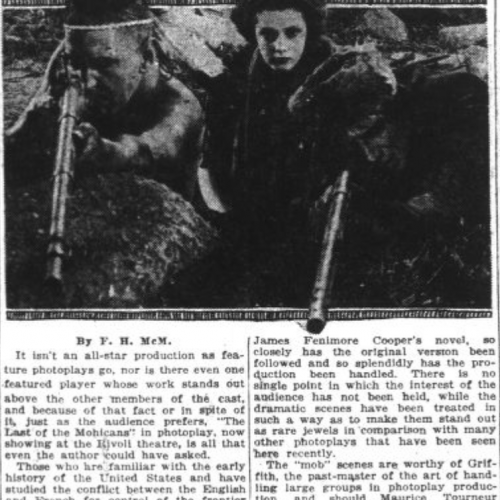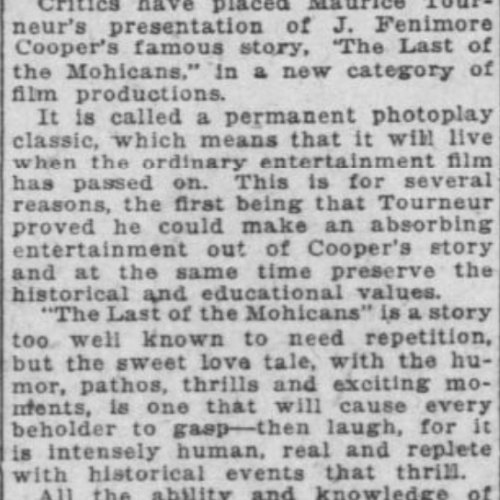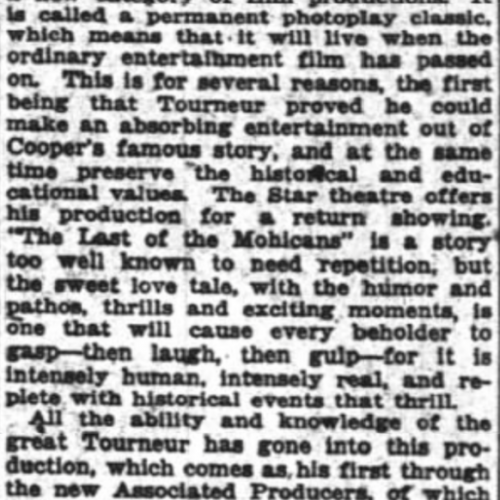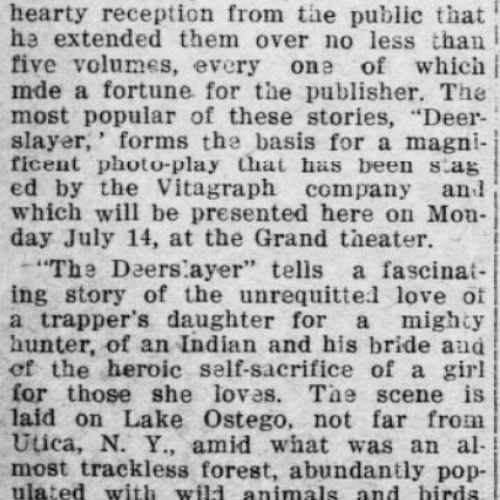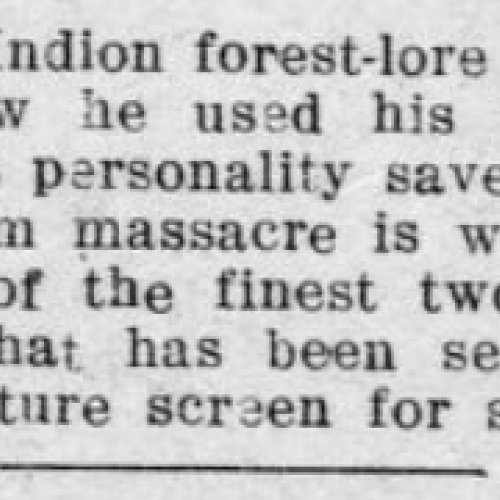In 1915, the motion picture world in the United States was intoxicated by the masterfully produced and extremely problematic The Birth of a Nation (1915) from D.W. Griffith. About five years later, there was another “historical” epic picture that had similarity to Griffith’s in terms of production grandeur, but equally as important in how racist it was. The Last of the Mohicans (1920) from Maurice Tourneur based on the novel by James Fenimore Cooper was heralded as “worthy of Griffith” and a “photoplay classic,” meaning that it was to be exhibited long after its initial run through the theater circuit.
D.W. Griffith’s legacy in regards to racist theatrical production and display can be traced back to 1909 with his Leather-Stocking Tales which was the first film adaptation of Cooper’s novels in a five-episode format. The Oregon Daily Journal (ODJ) exclaimed these particular films with high praise and the Grand theater exhibited the most successful of the lot, The Deer Slayer. Mohicans was able to find critical and public success from Griffith with white actors portraying Native Americans as “the good Indian,” the noble man who helps the white man with their wars and lets them take their land as they see fit dichotomously to being barbarians who will commit infanticide.
The 1920 adaptation was well-praised for having a large ensemble with great action, large sets, emotional and funny moments. A 1921 article in the ODJ praises the accurate historical and educational values that Cooper’s novel has. Taking place in the Seven Years’ War, Portland audiences were enthralled with the white retelling of history, blindly accepting the spectacle as a true representation of Native American interaction with European colonists during a time of conflict. Due to D.W. Griffith’s successful racially discriminative film production, The Last of the Mohicans was able to find success with Portland audiences. Unfortunately for Portland’s exhibition history, this film was meant for white citizens to watch and praise instead of criticizing it, as criticizing it “would be to question the literary qualities James Fenimore Cooper’s novel”.
Native Americans were not allowed to live in Portland until later in the decade after the film began exhibition, disabling their voice of protest for the film’s discrimination.
Citations
“Cooper’s Stories to Flash on Film.” Morning Enterprise [Oregon], 08 July 1913. Historic Oregon Newspapers.
Curry-Stevens, Cross-Hemmer, A., & Coalition of Communities of Color (2011). The Native American Community in Multnomah County: An Unsettling Profile. Portland, OR: Portland State University.
“Film Classic Is At Circle.” The Oregon Daily Journal, 13 Nov. 1921. Historic Oregon Newspapers.
Mem, F.H. The Oregon Daily Journal, 27 Sep. 1921. Historic Oregon Newspapers.
“Photo Plays: Rivoli Theatre.” The Oregon Daily Journal, 25 Sep. 1921. Newspapers.com
“Photo Plays: Star Theatre.” The Oregon Daily Journal, 1 Jan. 1922. Newspapers.com
Mem, F.H. The Oregon Daily Journal, 27 Sep. 1921. Historic Oregon Newspapers.
“The Last of the Mohicans (1920).” 15 Feb. 2020. IMDb.
